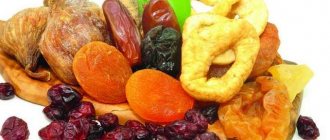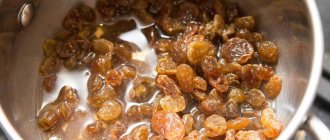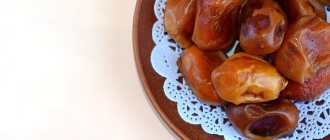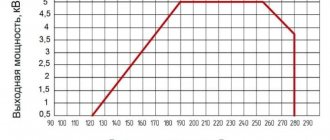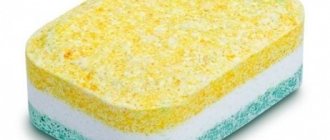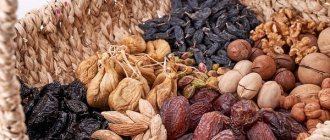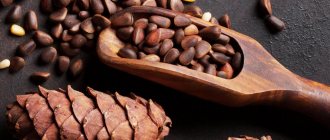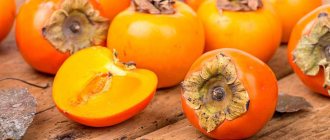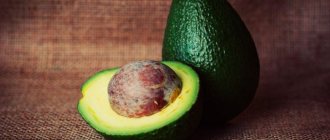Drying methods
There are not so many ways to dry fruits: in the sun, in the shade, using heat and chemical treatment. The most useful fruits are those dried in the shade; they become soft and retain all their beneficial properties, but at the same time acquire a darker shade than fresh ones. These products can be eaten without heat treatment, during which some of the vitamins are destroyed. Sun-dried fruits also retain vitamins and microelements and darken, but at the same time they still harden. They make wonderful compotes. Unfortunately, dried fruits are made mainly in private farms using these two methods.
In industry, fruits are first dried using electric dehydrator dryers, and then further treated with sulfur dioxide (also known as sulfur dioxide, food additive E220). This colorless gas with a pungent odor prevents mold and mildew and helps maintain the natural color of the fruit. It is believed that our body completely utilizes it when we eat dried fruits. There is also an opinion that when dissolved in water, it irritates the mucous membranes of the digestive system. Whether this is true or not, it is difficult to say, in any case, before eating attractive-looking delicacies, you should rinse them well and leave them in cold water for a while. It is better not to use hot water; it destroys the beneficial ingredients of dried fruits.
Example of fumigation of dried fruits with sulfur
Do you think that dried fruits do not need to be washed? Look then how they fumigate dried fruits, how they dry them right in the dust of the road and stomp on them with dirty boots!
1. Sulfur for fumigating raisins
2. Now they will put sulfur on hot coals...
3. Burning sulfur is placed inside the “gas chamber”
4. Poisonous “steam room” for raisins
5. Unbearable fumes, impossible to be near!
6. Properly sun-dried raisins. But you have to wash it afterwards.
7. Ready raisins (pay attention to how the guys pour this food product).
Techniques of unscrupulous manufacturers
Sulfur dioxide is not the only chemical found in colorful dried fruits. To give them a marketable appearance, they are pumped with preservatives and dyes, treated with glycerin or other fat, smoked with liquid smoke, and dipped in boiling water with caustic soda. Moreover, in some underground workshops they are dried in ovens that are not at all intended for this purpose, for example, gasoline or gas ones, as a result of which they acquire an unpleasant odor, and carcinogens, heavy metal salts and other harmful substances settle on their surface. Dried fruits are often sold without complying with sanitary standards; as a result, they absorb exhaust gases and become covered with dust.
Dangerous sulfur dioxide
To protect the product from mold and spoilage during storage, manufacturers treat quiche, apricot and plum with sulfur dioxide. This gas works real miracles with fruits. When dried, the fruits do not darken, remain bright and very attractive to the buyer. An important plus is that they are not afraid of any microorganisms.
But this connection is dangerous for humans. Sulfur dioxide, which is designated food additive E220 on product packaging, is extremely toxic. Its high concentrations cause suffocation and pulmonary edema in humans. And the small ones are unpleasant “symptoms” of ARVI:
- sore throat;
- coughing;
- hoarseness;
- runny nose.
Fruits treated with sulfur dioxide look perfect (Photo: Pixabay.com)
90 percent of dried fruits on the market are treated with sulfur dioxide. Traders claim that sanitary control simply does not allow unprocessed fruits to cross the border. In addition, organic, safe alternatives do not sell very well: buyers prefer amber raisins and spectacular yellow dried apricots to their shriveled and dark counterparts.
What can you dry?
Traditional types of dried fruits widely represented on the market are raisins, dried apricots, and prunes. However, almost any type of fruit or berry can be dehydrated, including:
- Apples;
- apricot;
- pears;
- cherry;
- plum;
- raspberries;
- blackberries;
- blueberries;
- cranberries;
- strawberries;
- rose hip.
Consistently high demand, with virtually no seasonality, and relatively high profitability make this area economically attractive for the development of personal business. However, for this it is necessary to master modern technologies for the production of dried fruits, purchase all the necessary equipment, and also obtain the required permits from regulatory authorities.
Useful properties of dried fruits
Like fresh fruits, they are rich in vitamins: A, B1, B2, B3, B5, B6. This is a con for immunity. One minus is that when dried, fruits lose most of their vitamin C. Dried fruits are also rich in minerals: iron, calcium, potassium, magnesium, sodium, phosphorus. Their chemical composition is identical to the fresh fruits from which they are prepared. As long as they don't contain artificial sugar.
100 grams of dry fruits contain more vitamins, minerals and nutritional value than fresh ones. It's all about concentration. The same applies to fruit sugar content and calorie content. If 100 grams of fresh fruits are usually not harmful for diabetics, the same amount of dried fruits may cause an undesirable reaction.
Watch a short video in which experts explain how dried fruits are made and how they are processed. And also about how to choose them correctly, whether modern products are beneficial, and what you need to know before buying.
When should you eat dried apricots?
You can use the product before bed, but in moderation. If you adhere to a dietary diet, then you should eat dried fruit in the morning or afternoon - before 16:00. The calorie content of dried apricots per 100 grams of product is 215 kilocalories.
Interesting materials:
Where did the name Volgograd come from? Where did the name of the Syrdarya River come from? Where does the name of the Chinese horoscope come from? Where did the name pancakes come from? Where did the name Yeralash come from? Where did the name of the city Vladimir come from? Where did the name of the group Alice come from? Where did the name Mariupol come from? Where did the name Toyota come from? Where did the name sprats come from?
How to store and eat
It is better to store dried fruits in a cool, dark place so that they remain healthy longer. Be sure to transfer them from the bag to another container. It's best to put it in a glass jar. You should not store dried fruits in the refrigerator, because it is too humid - mold may appear. If you already see its presence, do not cut off the damaged areas, but throw away the whole fruit. Mold on dried fruits is considered one of the most dangerous for the body.
Before eating, dried fruits should be soaked for 10-15 minutes. Then they need to be washed with running water. Fruits should be consumed in limited quantities. A good daily dose is 30-50 grams. You can drink them with unsweetened tea. Some dried fruits can be added to dishes. For example, prunes in a beet salad or dried apricots with meat for baking.
What dried fruits can you eat while losing weight?
Dried fruits are an excellent substitute for sweets for those who are fasting or want to lose weight. In addition, they are incredibly healthy and are not as addictive as chocolate and candy. You can easily eat a couple of fruits with tea or coffee during a snack, and you will not want more.
However, this does not mean that you can eat an unlimited amount of dried fruits per day and not be afraid of gaining weight. Moderation and common sense are necessary in everything. It is worth remembering that the calorie content of dried fruits is much higher than that of fresh fruits due to the lack of moisture. If the average calorie content of an apple is about 80 kcal, then a glass of dried apples contains 2.5 times more.
However, it is dried apples
are included in the list of dried fruits recommended for weight loss. They are rich in dietary fiber and give a feeling of fullness, and also improve metabolism. So if you're on a diet, you can stock up on apple slices for a healthy snack. It is best, of course, to use homemade garden apples. You can easily dry them yourself in the fall and then eat them all year round: if stored properly, apples can easily last for up to two years.
The unique substance bromelain in pineapple
helps quickly burn fat and prevents the appearance of atherosclerotic plaques on the walls of blood vessels, but most importantly, it does not lose its properties after heat treatment. This means that natural candied pineapple is an ideal dietary product. Moreover, they have less calories than other dried fruits. The natural fiber of pineapple helps to effectively cleanse the body of toxins, and minerals and vitamins make it a real antidepressant and natural energy booster.
Candied orange peel
also help in weight loss. They contain a lot of fiber, which cleanses the body of cholesterol, toxins and waste. Orange peel is rich in pectins, flavonoids, vitamins, minerals; it prevents the formation of subcutaneous fat. But be careful: candied oranges are still high in calories, because they are boiled in sugar syrup, so remember the benefits, but do not forget about the harm.
Whatever types of dried fruits we are talking about, keep in mind that 100 grams of fresh and 100 grams of dried fruits are not the same thing. A calorie table will help you understand how many dried fruits you can eat per day if you don’t want to gain weight.
In addition to caloric content, it is worth paying attention to the glycemic index - this is an indicator of how a product affects the level of glucose (sugar) in the blood. Most dried fruits have a low (up to 55) or medium (up to 69) glycemic index. Here is another reason why dried fruits are good for weight loss.
So, for prunes this indicator is 25, for dried apricots and pears - 30, for figs, kumquats and apples - 36. For comparison: for raisins - 65. Dates have a high glycemic index (70). However, this does not mean that dates are harmful to health. In reasonable quantities, with a balanced diet and physical activity, they will only be beneficial. And remember that 5 dried apricots are 5 apricots, and a handful of raisins is a whole branch of grapes.
Where to buy
Dried fruits can be bought in supermarkets: loose or in factory packages. And also in the markets. We'll tell you what the pros and cons of all options are.
If you buy dried fruits in factory packaging, you have the opportunity to accurately determine their composition. Check for sugar and make sure there are no chemicals. The manufacturer will be fined for false information, so usually there is no deception here. However, you will not be able to smell the product through the packaging. And no one forbids factories from drying fruits artificially. So if you buy factory-made dried fruits, buy products from trusted manufacturers.
For bulk products, you can go to the market or supermarket. If you choose the second option, you will receive a guarantee that the dried fruits were stored correctly. The markets don't always follow this. But goods at bazaars are usually cheaper. Especially when we are talking about Uzbek, Turkish, Tunisian dried fruits. In the homeland of manufacturers, you can bargain. If you are sure that you can distinguish good dried fruits from bad ones, go to the market.
Why wash and soak dried fruits?
After purchasing, many people have a well-founded question: do they need to wash dried fruits, and if so, how to wash them correctly?
To answer this question, let's first understand how dried fruits are produced and processed.
To turn fresh fruits into dried fruits, they must be subjected to a drying process. As a result, dull, wrinkled, dark and not very pleasant-looking fruits and berries are obtained. Therefore, after drying, they are further processed.
Processing is carried out to improve the appearance of the product. However, this is not the most important thing. The main purpose of processing is to prevent rotting and increase the shelf life of dried fruits.
For the production and processing of dried fruits: prunes, dried apples, raisins, dried apricots, etc. Various preservatives are used. For example, they can take sodium benzoate (E 211) or potassium sorbate (E 202). They kill yeast and molds.
Danger #2: Strange taste
“Drying plum fruits naturally, in the shade or in the sun, is quite difficult; they quickly turn sour,” says Nadezhda Semenova. “Therefore, they are dried in an accelerated way in gas or gasoline ovens at high temperatures. When prunes, dried apricots, and raisins take on the taste of gasoline, the skin cracks, carcinogens settle on it, and the vitamins and enzymes inside die.”
How to protect yourself : when buying dried fruits, take a good sniff. The smell of gasoline and smoke leads to suspicion. Severely cracked dried fruits are a defect. Buy dates with pits, raisins and prunes with stems. Such fruits retain nutrients better.
